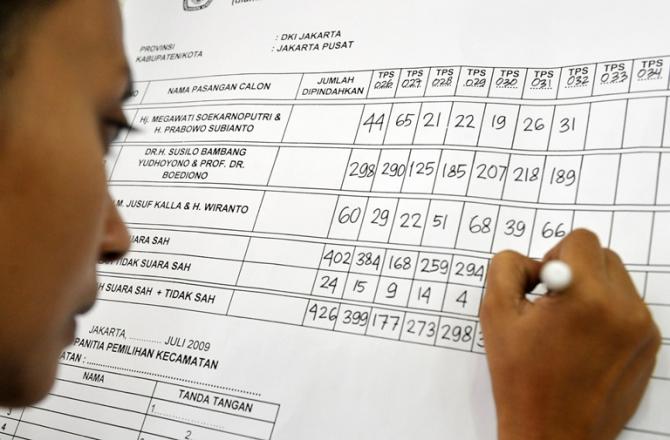
The proportional electoral system in Indonesia contains a number of contradictions or inconsistencies. First, with 70 out of 77 constituencies having six to 10 allocated seats, the result is medium-sized, multi-member constituencies. This size of a constituency is believed to foster the presence of large numbers of political parties in the House of Representatives. However, there is a 3.5 percent threshold to gain membership in the House – a regulation specifically set to reduce the number of political parties in the DPR.
Second, the medium multi-members constituency is designed to ensure an adequate degree of representation. However, the voting mechanism and determination of winning candidates based on the plurality of votes would not only nullify the role of political parties as election participants, but most importantly would steer political representation into efforts to ensure accountability of the people’s representatives. On paper, the political representation system would shift from promoting representation of the people to promoting the representatives’ accountability.
Third, the candidacy pattern is determined based on party list, but winning candidates are determined based on an open list. Despite election law requirements that political parties shall utilize their vision, mission and programs as campaign material, the campaign is practically carried out by the candidates themselves, who garner votes using whatever means they choose. Hence, what occurs is not competition between political parties; instead, the competition is between candidates from the same political parties, within the same constituency. The result is that political parties are like event organizers rather than true participants in an election. Hence, the question arises of who is representing the constituents: the winning candidates or the political parties? If the representatives are the winning candidates, then why is decision-making in the House of Representatives made by party leaders who push the parties’ policies?
Fourth, in order to increase women’s representation in parliaments, a number of democratic countries with proportional electoral systems adopt quota policies for women, but also use similar candidacy patterns and mechanisms to determine winning candidates via a party list. However, in Indonesia, the opposite applies. Although political parties are obliged to have at least 30 percent female candidates in each district and at least one woman for every three candidates on the party list in each district, winning candidates are determined based on the plurality of votes. As a consequence of this inconsistency, candidate quotas and small-number quota policies for women become void. The increase of elected women as members of the House in 2009 was not the result of the electoral system but due to Indonesian voters, who tend to vote for candidates listed first, second or third on a ballot.
Fifth, the 1945 Constitution mandates political parties as participants in the legislative elections, but votes for election participants are valued less (as the votes only help securing seats for political parties) than votes cast for candidates (which help secure not only seats for the party but also for the candidate). This mechanism certainly contradicts the one person, one vote, one value principle as stated in Article 27, Paragraph (1) of the 1945 Constitution, since the value of votes for parties is unequal to the value of votes for candidates.







%20resized.png)
